The Great Roadrunner Rescue
A Close Encounter with a Roadrunner We Named “Click” (its actually more of a woodpeckeresque sound than a Beep Beep!)
One of my morning routines is to fish the critters out of my pool. We have many wide open spaces where I live, and creatures tend to wander into the pool regularly. I have fished out bats, mice, squirrels, and frogs before, but what I found that morning stopped me. It was a roadrunner with enormous bird wings floating near the edge.
Naturally, being the animal rescuer that I am, I fished him out and went to grab my husband. We spent a couple of hours drying him off and warming him up before he was ready to jump the fence and return to hunting snails and lizards.
This particular guy was super friendly and unafraid as if he knew we were trying to help him. He didn’t make a sound, but we let him warm up in our hands and used a towel to dry his wet feathers. He seemed more than happy and almost grateful for us to help him. He even sat inside the house on my husband’s lap in his recliner with him for a while until his temperature heated back up and his feathers weren’t so heavy.
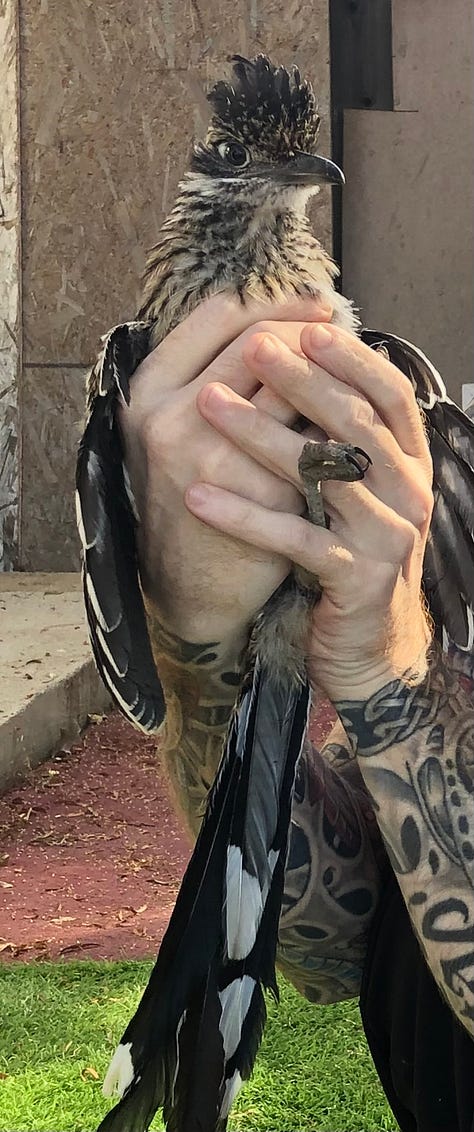

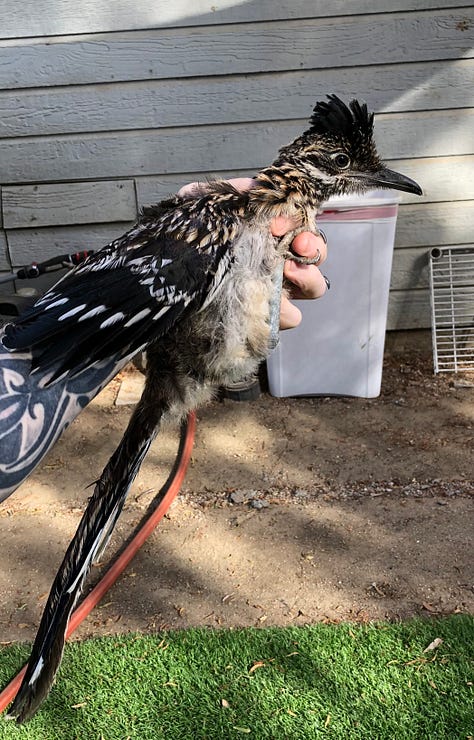
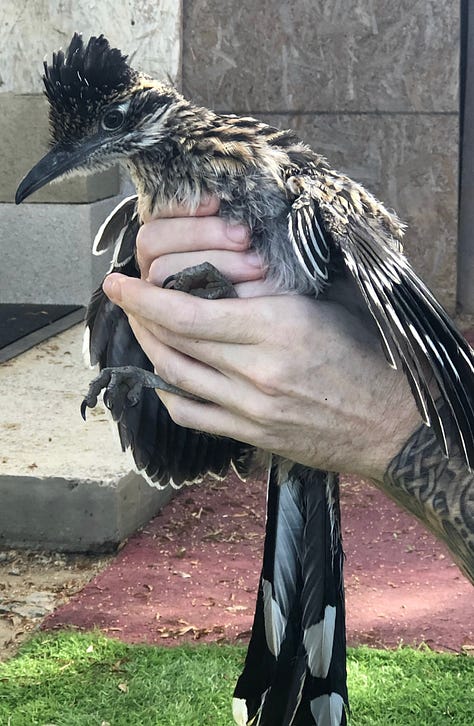
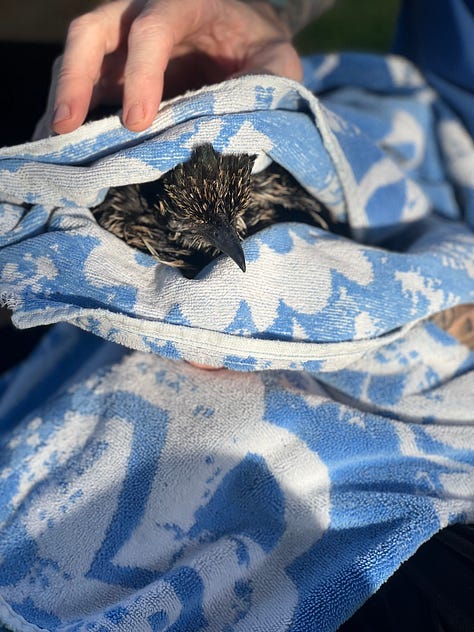
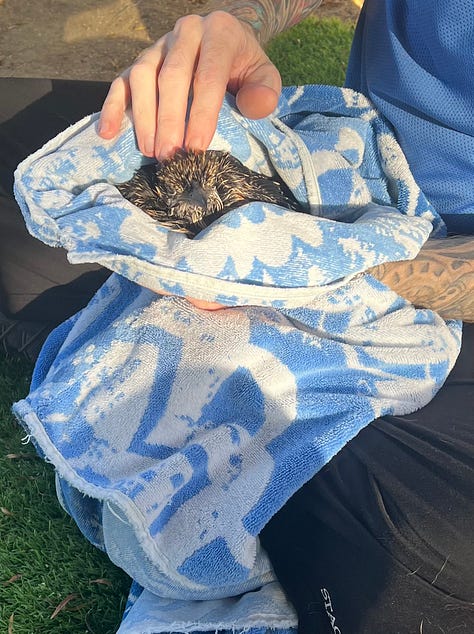



Roadrunners are opportunistic hunters. They employ various hunting techniques, including stalking, pouncing, and even cooperative hunting with their mate. Their primary targets include insects, reptiles, and small rodents. They have also even been known to eat rattlesnakes. Yay. I hate rattlesnakes. Enjoy the photos because you rarely see a predator like this up close.
The Hopi and other Pueblo tribes believed roadrunners were medicine birds capable of warding off evil spirits. The X-shaped footprints of roadrunners were seen as sacred symbols, thought to confuse evil spirits by concealing the bird's direction of travel.
Stylized roadrunner tracks have been found in the rock art of ancestral Southwestern tribes like the Mogollon cultures. Roadrunner feathers were used to decorate Pueblo cradleboards for spiritual protection. Among Mexican Indian and American Indian tribes, such as seeing a roadrunner is considered good luck. While some Mexican tribes revered the roadrunner and never killed it, most used its meat as a folk remedy for illness or to boost stamina and strength.
After “Click” began to dry, he started to regain his strength and started to stand up on his own. We put him outside in the sun and kept a careful eye. After another hour of drying in the sun, he ventured up towards the fence line. He took a running jump, and then he was up and over, returning to his business of being wild again.
We sometimes see “Click” in the yard doing his usual hunting. You might be asking why we named him Click. I am glad you asked. He and his mate wander around the property occasionally, making this clicking noise. To make things even sweeter, we named his mate “Clack.” Roadrunners mate for life.
Check out the video below for the sound they make when clacking.
It brings me a lot of joy to see “Click” and “Clack” the Roadrunners in the yard from time to time, and I am thrilled that we were able to save “Click.” So that he could return home to “Clack” and resume his everyday Roadrunnery life.
I hope you enjoyed this story. It is meant to be a break from all the chaos and more serious posts, and I seem to have an affinity for rescuing animals. Next, I will have to tell you the story about the turkey (yes, turkey—not wild, though) I found on my car (yeah, on the roof of my car). This is the love and light part of the Truth, Love, and Light newsletter.
Merry Christmas and Happy New Year everyone!
If you liked this one, check out my story about my potbellied pig rescue below. It's also a pretty feel-good story.
The Big Adventures of Willie the Pig
Finding an abandoned potbellied pig in the middle of a field has helped me become a better human.

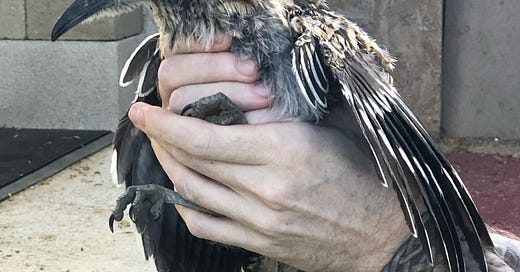




Marvelous!
Great article & video🥰